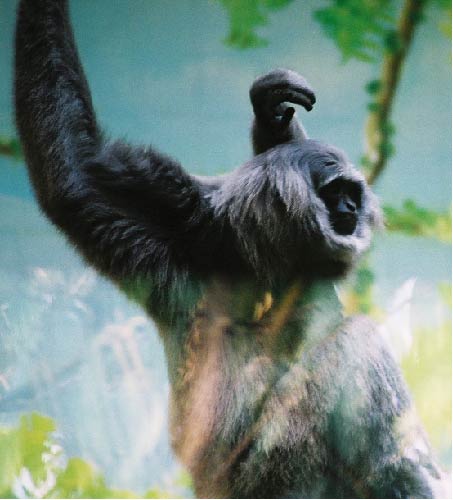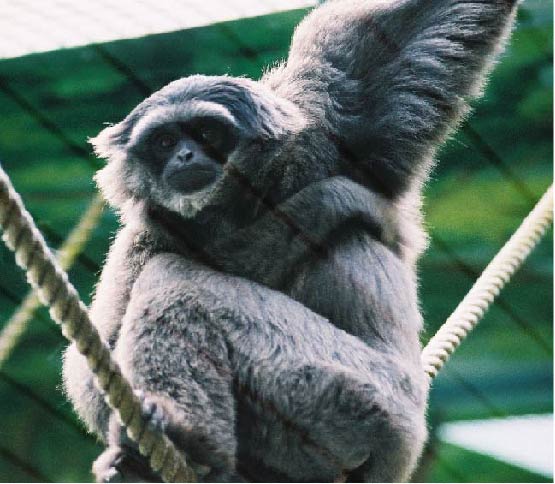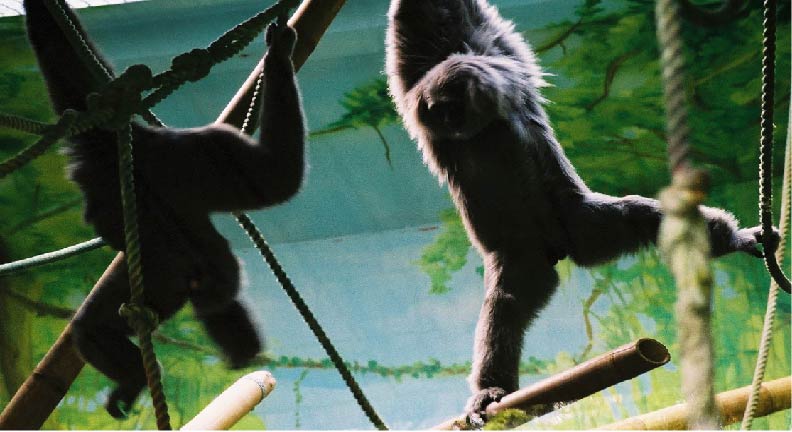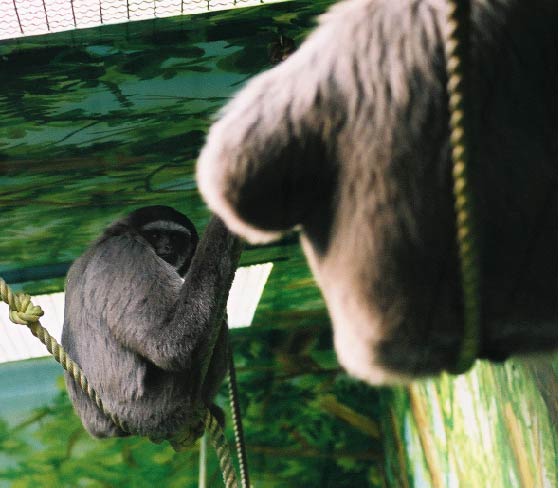
VISUAL COMMUNICATION:
TACTILE COMMUNICATION:
social grooming: This is when one individual grooms another and is used to reinforce the bonds between individuals.
REPRODUCTION:
The moloch gibbon gives birth to a single offspring.


 |
OLFACTORY COMMUNICATION: VISUAL COMMUNICATION: TACTILE COMMUNICATION: social grooming: This is when one individual grooms another and is used to reinforce the bonds between individuals. REPRODUCTION: The moloch gibbon gives birth to a single offspring. |
